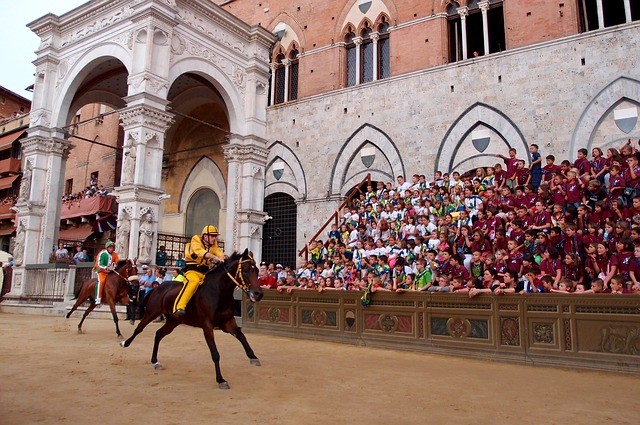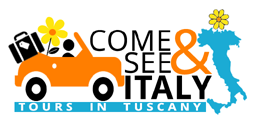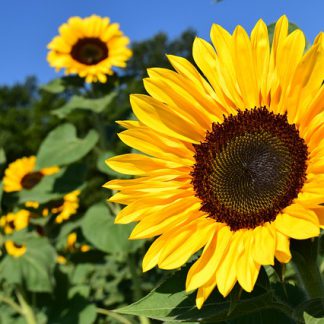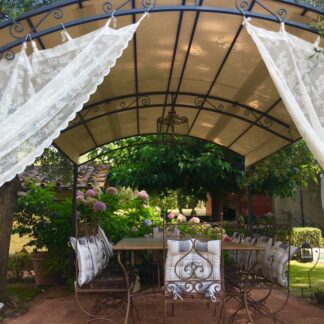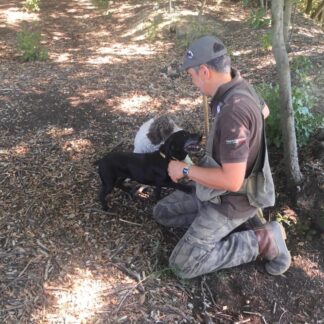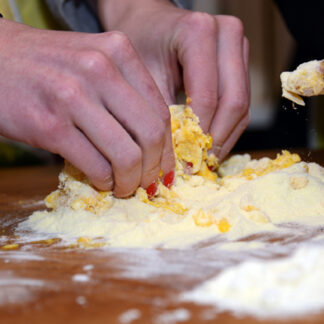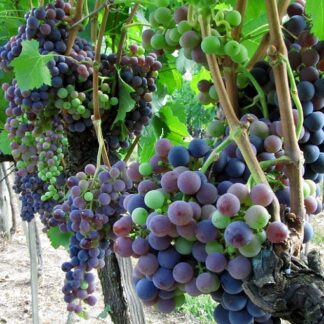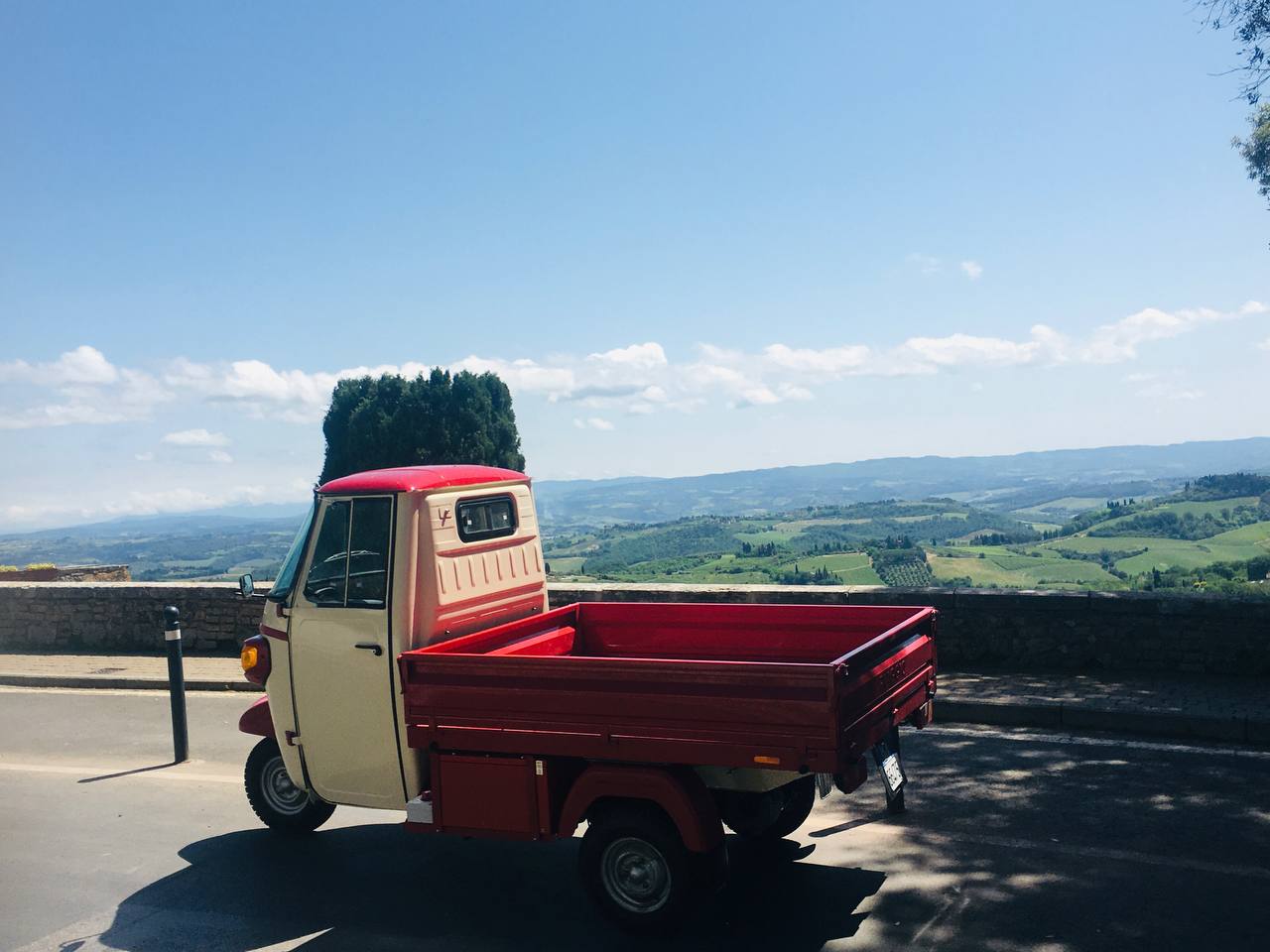
Our Top 10 Tuscan Cities for Movie Tours:
ITINERARY 1: Pienza, Montepulciano, Val d’Orcia
ITINERARY 2: Cortona and Arezzo
ITINERARY 3: San Gimignano, Monteriggioni, Siena
ITINERARY 4: Forte dei Marmi and Carrara
ITINERARY 5: Montecatini and Florence
Here are the trips to take with us to discover the Tuscan film locations through the most famous films shot in Tuscany.
ITINERARY 3: San Gimignano, Monteriggioni, Siena
San Gimignano Movie Tour
The city of San Gimignano is defined as the Manhattan of the Middle Ages, which, embellished by its towers, give it the characteristic aspect of this wonderful village. Precisely because of this beauty, preserved over time, it arouses a particular charm in anyone who comes to visit it. That interest has also been noticed by several directors who have chosen it for the shooting of their films. One above all is the great Franco Zeffirelli who chose it for two of his many masterpieces. One is the poignant retelling of the story of St. Francis, “Brother Sun, Sister Moon“; of 1971.
A few years later, in 1999, he returned to shoot a second film: “Tea with Mussolini“, with Judi Dench and Cher. The plot of the film tells the story of a group of English aristocrats who love the art of culture, who heroically defend the city’s treasures from the Germans who wanted to destroy two towers: the Rognosa and the Torre del Podestà. Part of the film was shot in the streets of the center and around the countryside of San Gimignano. The city of San Gimignano was built on a hill about 300 meters high and enjoys a privileged view of the characteristic landscape of the surrounding Val d’Elsa.
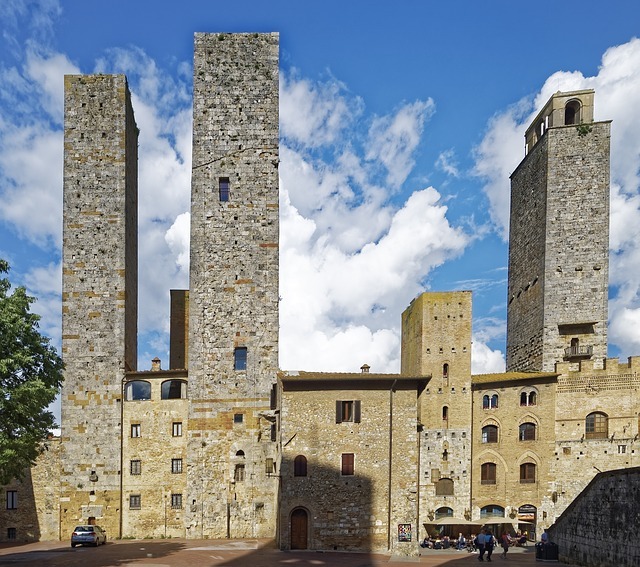
The hill, as testified by various finds found in the municipal area, was inhabited since the Etruscan and Hellenistic periods, probably precisely because of its dominant position which made it possible to keep the valley under easy control. San Gimignano was so called around the X century AD. in honor of San Geminiano, bishop of Modena who lived in the fourteenth century, who is said to have saved it from the onslaught of the barbarians by appearing to them on the city walls.
In the Middle Ages San Gimignano lived its most flourishing period, thanks also to the fact that it was crossed by the Via Francigena, one of the main communication routes of that era. The city was an important point of reference for the numerous traders, wayfarers and above all for the many faithful who went on pilgrimage to Rome and who needed hospitality and, often, assistance as well. At the end of 1100 San Gimignano became a free municipality. The city was involved in the struggles between Guelphs and Ghibellines, which was almost inevitable given its central position with respect to the two great rivals, Florence and Siena (the first Guelph, the second Ghibelline).
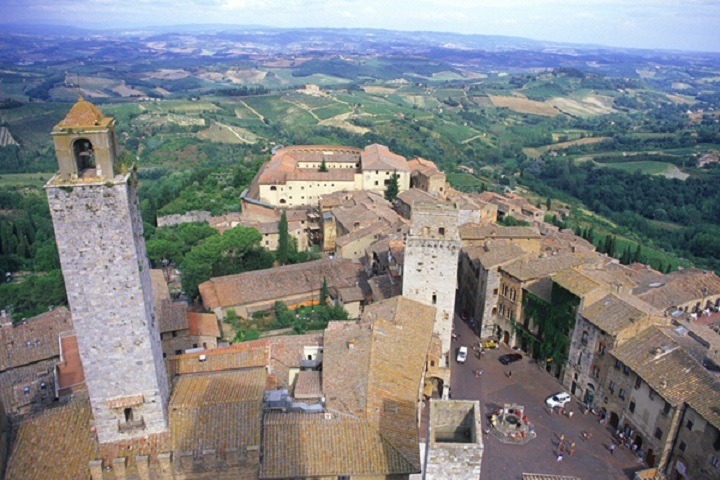
Despite the struggles, the 1200s was the century of greatest economic development for San Gimignano, thanks mainly to the trade in local products (mostly agricultural, such as saffron and wines such as Vernaccia di San Gimignano, the first wine in Italy to receive the DOCG and among the first for DOC). The city was enriched considerably and numerous public works were also carried out. San Gimignano was governed by the Ghibellines until 1255, the year in which it passed into the hands of the Guelphs, who destroyed the original walls. By winning the famous Battle of Montaperti in 1260, the Ghibellines regained possession of the city, rebuilding and expanding its walls.
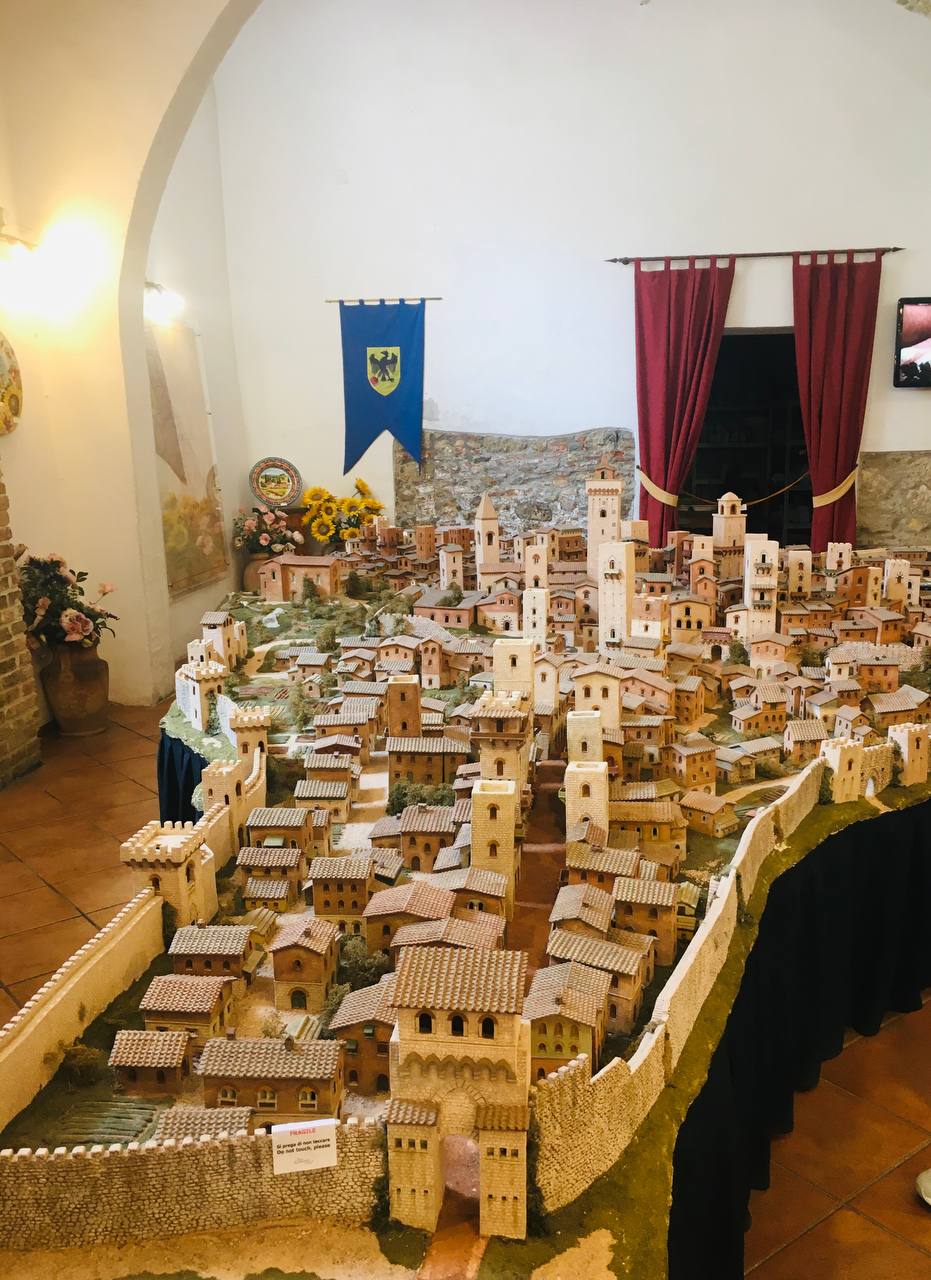
In the year 1300 San Gimignano welcomed Dante Alighieri, who arrived as ambassador of the Guelph league.
In the middle of the century San Gimignano was unfortunately hit by plague and famine and could not do anything but submit to the power of Florence.
The city then began a slow political and economic decline, however continuing to grow from an artistic and cultural point of view in the following centuries. Among the most important works we mention, the Renaissance frescoes by Domenico Ghirlandaio in the Chapel of Santa Fina, located inside the Cathedral.
Despite the passing of the centuries, San Gimignano has managed to preserve its medieval appearance and still today it is unquestionably one of the great little treasures of Tuscany. The “city of beautiful towers“, was declared a World Heritage Site by UNESCO in 1990.
Monteriggioni Movie Tour
Along the road that leads from San Gimignano to Siena, one of the most significant fortified villages in the area can be seen imposingly on a hill. Monteriggioni was built by the Sienese between 1213 and 1219 for purely defensive purposes and dominates the area from the top of a hill overlooking the Via Cassia, a strategic position which allowed the city to control Colle Val d’Elsa and Staggia. The intact city wall consists of 14 towers and 2 gates. The Porta Franca or Romea facing Rome and the Porta Fiorentina facing Florence. The prestige and particularity of this village enjoy a consolidated reputation for some time now; even the great poet Dante Alighieri mentions Monteriggioni in his most famous work, the Divine Comedy:
« […] however that, as on the round circle
Monteriggion is crowned with towers,
so is the shore which surrounds the well
they towered by half the people
those horrible giants, which Jupiter of the sky still threatens when he thunders »
– Dante Alighieri, Inferno, canto XXXI, lines 40-45
Every year a special event is celebrated within the walls of the town in the month of July: the “Medieval Festa” of Monteriggioni, one of the most beautiful and plausible medieval re-enactments in the region.
Siena Movie Tour
The atmosphere is unique in Siena, a city where every stone has remained unchanged. It looks perfect in its medieval balance, sitting on three hills in an idyllic countryside setting. The city was chosen by director Marc Forster for the 2008 James Bond film “Quantum of Solace”; with Daniel Craig, Judi Dench and Giancarlo Giannini.
The opening scenes of the film were shot in Piazza Del Campo, in the courtyard of the Palazzo Pubblico and in the surrounding area between via di Salicotto and via di Panteneto. For the occasion, medieval Siena has also become a film set. How can we forget the scenes of the Palio, where to recreate the moments of the review a portion of the Piazza del Campo was spread out with sandy earth with a few hundred extras to represent the spectators. During the Palio scene James Bond can be seen coming out of a trap door next to the Fonte Gaia, the medieval fountain in the square, a masterpiece by Jacopo della Quercia. With the colors of its palaces and houses built in red bricks, that “Terra di Siena ” is known throughout the world, Siena reveals itself as one of the most beautiful medieval cities in Italy.
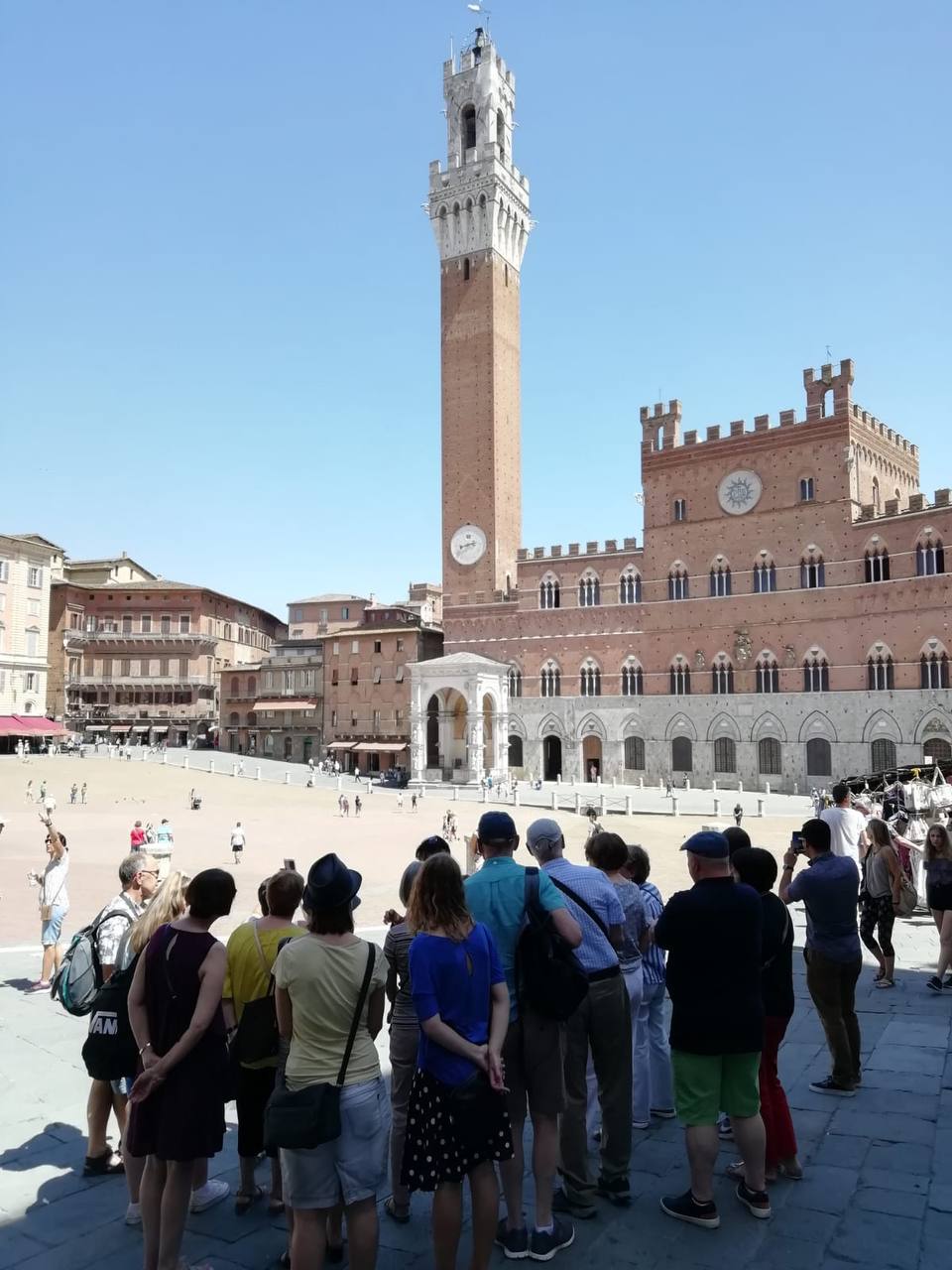
According to legend, Siena was founded by Senio, son of Remus, which is why there are several statues of the she-wolf suckling Romulus and Remus in the city. The period of maximum splendor of the city was reached in the middle of the Middle Ages, under the Government of the Nine, a semi-democratic group in power between 1287 and 1355. During this flourishing period the main buildings of the city were built such as: the Palazzo Pubblico with the Torre del Mangia, the Cathedral and Piazza del Campo with its characteristic shell shape, divided into nine segments in memory of the Government of the time.
The square represents the heart of Siena, since Roman times who had their forum here. It is also the protagonist of the most important event in the city. The Palio di Siena, the extraordinary horse race that since 1633 has animated the Sienese and those who come there twice a year: on 2nd July, in honor of the Madonna di Provenzano and on 16th August for the Madonna dell’Assunta. The Palio puts 9 out of 17 Contrade in competition, and consists of three laps to be carried out around Piazza del Campo, which for the occasion is covered with sand and tuff. The winner of the Palio is given the drapery or “Cencio” so called by the Sienese. It is a large silk canvas, created each year by a different artist.
